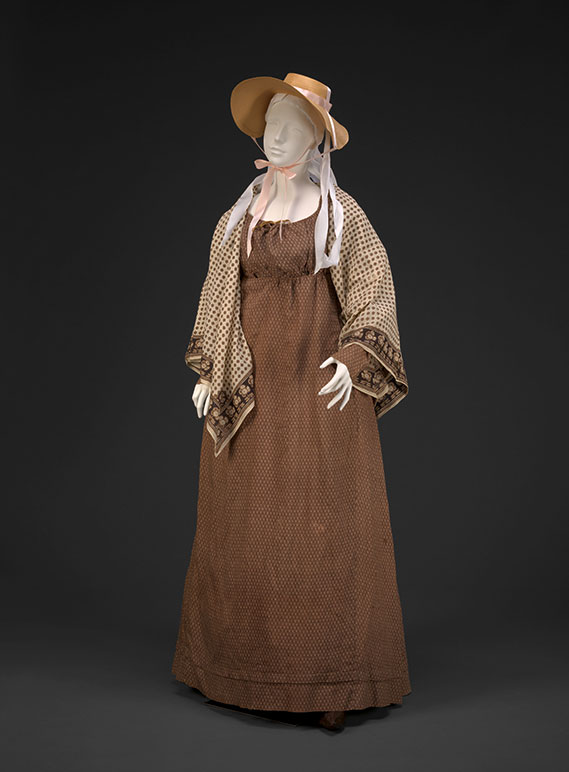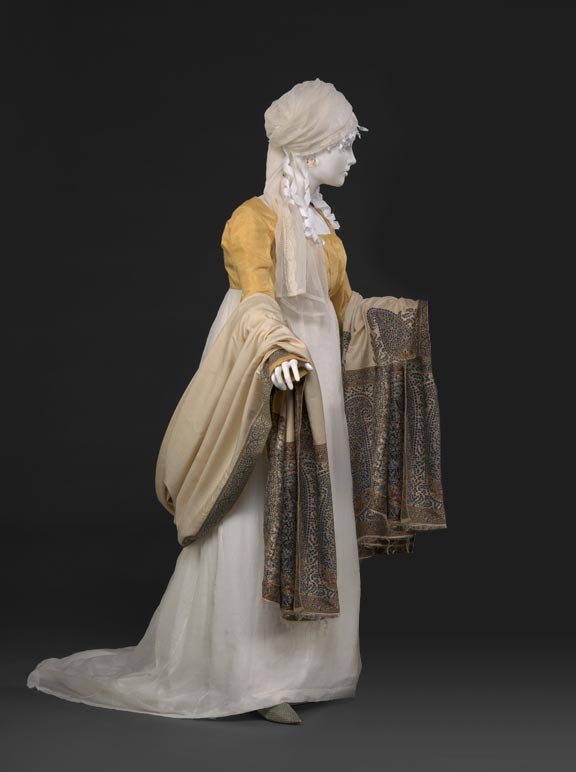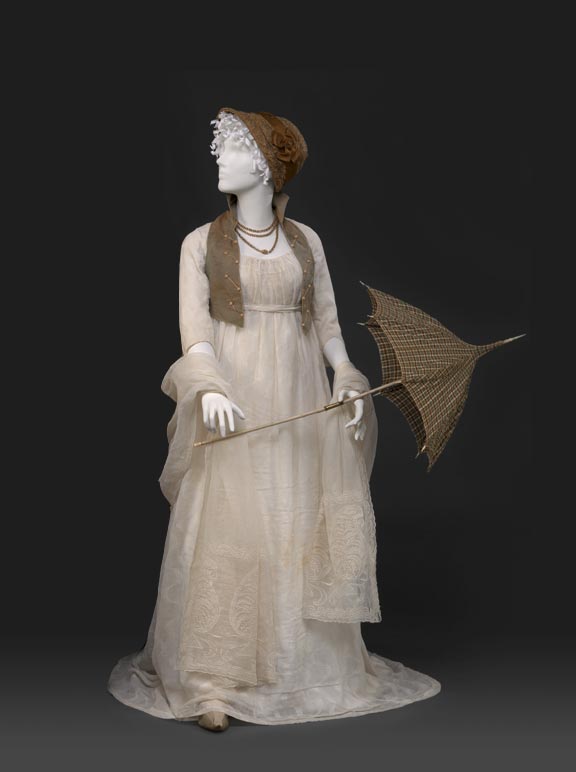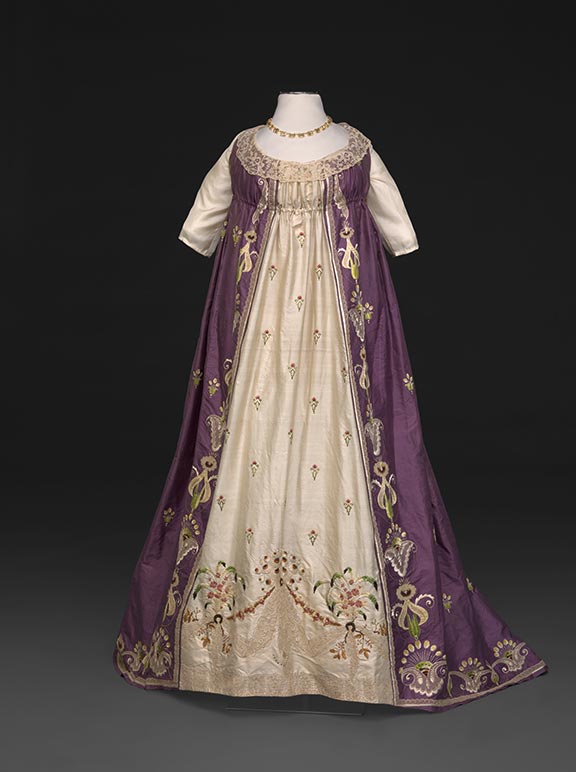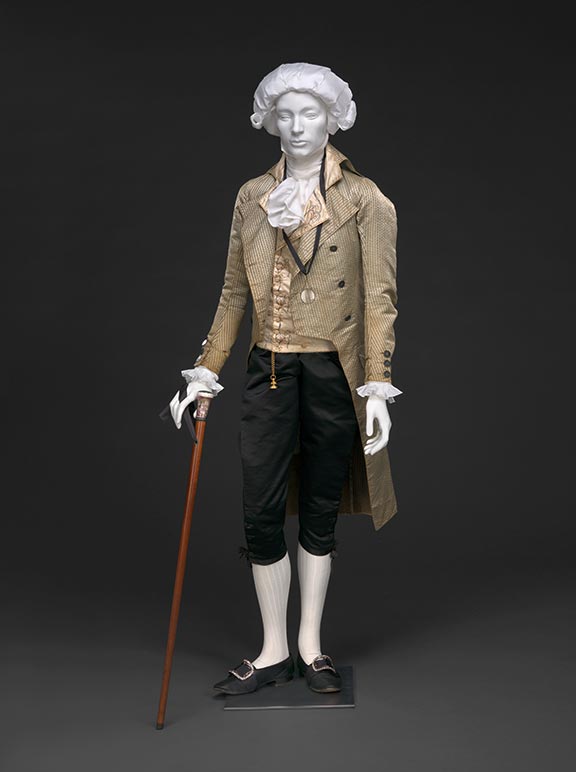Roller-Printed Dress
About 1795–1800
Style: This simple everyday dress in a relatively inexpensive, roller-printed cotton, shows the new round gown construction, which we now call an “apron front.” The long sleeves, drawstring bodice, and narrow silhouette reflect the styles of the later 1790s, while the simple back construction indications it had no real pretentions to fashion.
The bodice front pieces tie with drawstrings at neckline and waist, and the front skirt panel also has a drawstring which ties around the waist. The back bodice is pieced very simply and not fashionably, with a single wide piece all across the back. It also shows evidence of alterations: the original, slightly longer bodice is intact inside the now-raised skirt.
Fabric: The block-printed shawl may have been imported from India, or may be a European imitation of popular Indian printed and woven shawls. The dress’s small continuous design can only come from the new roller-or-cylinder printing technology. A simple two-color print like this would not be very expensive.
This dress could easily be made at home rather than depending on a dressmaker. It may have been an everyday dress or a Sunday best, depending on the social level of the owner.
Dress, 2004.2.1, Friends of the Museum Purchase; cotton block printed shawl, about 1790-1810, 78.50, DAR Museum; straw hat, 1790s with modern ribbon, 2000.1, Friends of the Museum Purchase.
A printed dress with just two colors illustrated in a German fashion plate (detail). Journal des Luxus und der Moden (Leipzig), 1798.

